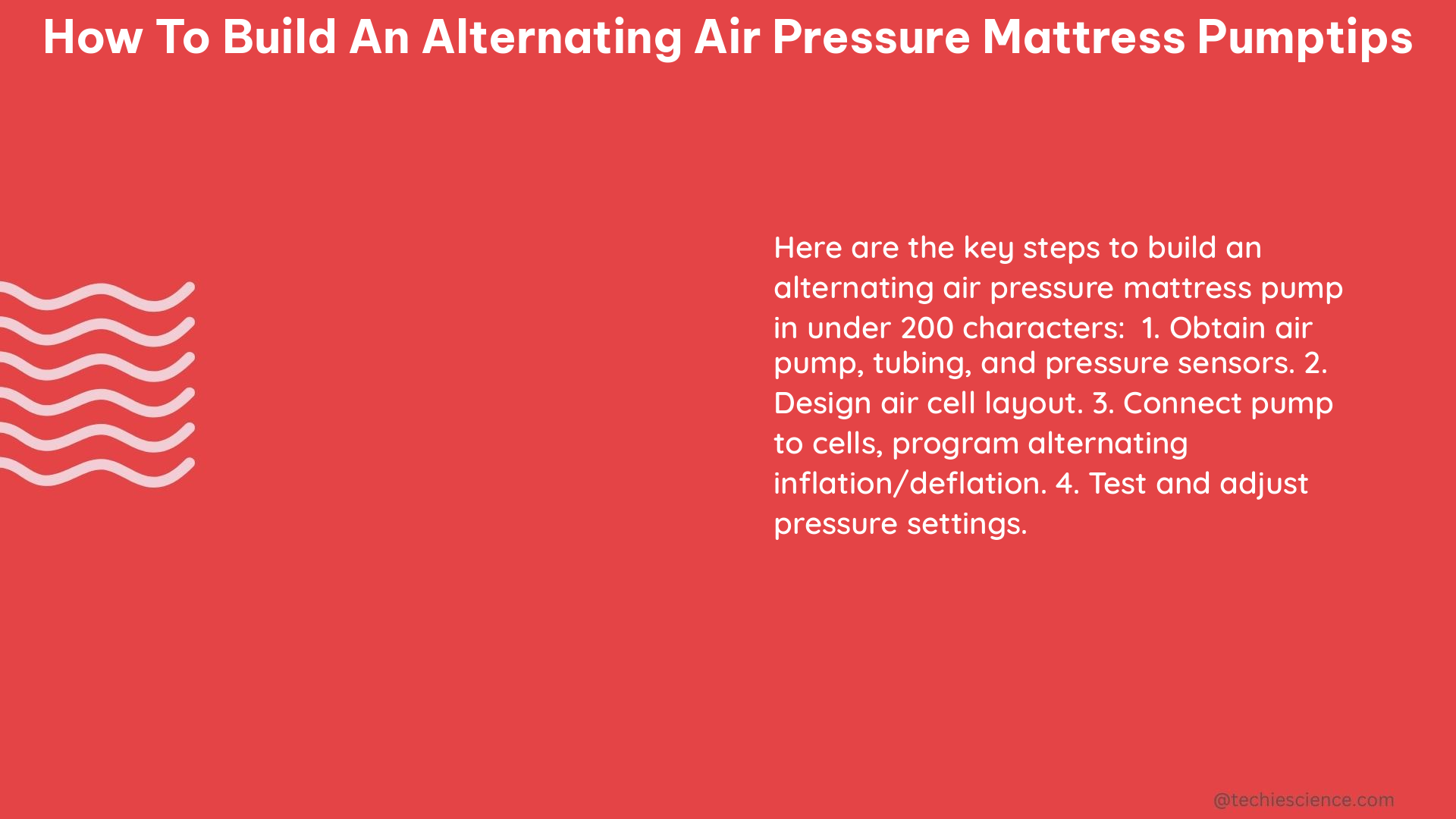Building an alternating air pressure mattress pump requires a deep understanding of the technical specifications and a meticulous assembly process. This comprehensive guide will provide you with the necessary information and step-by-step instructions to construct a high-performance alternating air pressure mattress pump that can effectively relieve pressure and prevent pressure ulcers.
Air Pressure Range and Airflow Volume
The key to an effective alternating air pressure mattress pump is its ability to deliver the right air pressure and airflow volume. The pump should be capable of generating air pressure within the range of 10 to 30 mmHg, which is the optimal range for pressure relief and redistribution. To achieve this, the pump should have a compressor capable of delivering an airflow volume of at least 8 liters per minute (LPM). This airflow volume ensures that the mattress can quickly inflate and deflate the air cells at a programmable frequency, typically ranging from 5 to 60 cycles per hour.
Power Requirements and Construction Materials

The alternating air pressure mattress pump should be designed to operate on standard household electricity, either 110-120V or 220-240V, depending on your location. It should also have an automatic shut-off feature to prevent overheating and ensure safety. The construction materials used for the pump should be of high quality and durability, such as stainless steel or aluminum for the frame and motor housing, and reinforced PVC or silicone for the air hoses to prevent leaks and ensure longevity.
Inflation and Deflation Time
The inflation and deflation time of the mattress is crucial for the pump’s performance. For an 8-inch alternating pressure mattress, the inflation time should be around 10-15 minutes, while the deflation time should be around 5-10 minutes. This ensures that the mattress can quickly adjust to the user’s needs, providing the necessary pressure relief and redistribution.
Noise Levels and Control System
To minimize disruptions during sleep or rest, the alternating air pressure mattress pump should operate quietly, with a noise level of less than 50 decibels (dB). The control system should be user-friendly, allowing the user to easily adjust the air pressure and cycle frequency. Ideally, the pump should have a digital display that shows the current pressure and cycle status, providing the user with real-time feedback.
Safety Features and Backup Power
Safety is of utmost importance when building an alternating air pressure mattress pump. The pump should have features such as low-pressure alarms, overheat protection, and automatic shut-off in case of power loss. Additionally, it should have a backup battery system to ensure continuous operation during power outages, providing uninterrupted pressure relief and redistribution for the user.
Assembly Process
To build an alternating air pressure mattress pump, you will need to assemble the following components:
-
Motor and Compressor Unit: The motor and compressor unit is the heart of the pump, responsible for generating the necessary air pressure and airflow. Choose a high-quality, durable motor and compressor that can meet the technical specifications.
-
Air Pressure Regulator and Flow Controller: The air pressure regulator and flow controller are essential for adjusting the air pressure and flow rate to match the mattress specifications. Ensure that these components can handle the required pressure and airflow volume.
-
Air Hoses and Connectors: The air hoses and connectors should be made of reinforced PVC or silicone to prevent leaks and ensure a secure connection between the pump and the mattress.
-
Pressure Relief Valves and Solenoid Valves: Install pressure relief valves and solenoid valves at strategic points along the air hoses to ensure proper pressure relief and cycle control.
-
Control System and User Interface: Assemble the control system and user interface, connecting them to the regulator, solenoid valves, and power supply. Ensure that the control system is user-friendly and provides the necessary feedback.
-
Power Supply and Backup Battery System: Connect the pump to the power supply, ensuring proper voltage and amperage. Install the backup battery system to provide continuous operation during power outages.
-
Testing and Adjustment: Perform a series of tests to ensure the pump operates correctly, adjusting any settings or components as necessary to optimize its performance.
By following these steps and adhering to the technical specifications, you can build a high-quality alternating air pressure mattress pump that provides effective pressure relief and redistribution, ensuring user comfort and preventing pressure ulcers.
References
- How to Build an Alternating Air Pressure Mattress Pump
- Alternating Air Pressure Mattress Pump Assembly
- Alternating Air Pressure Mattress Pump: A Technical Perspective
- Alternating Air Pressure Mattress: A User’s Guide
- The Effectiveness of Alternating Air Pressure Mattresses in Pressure Ulcer Prevention
